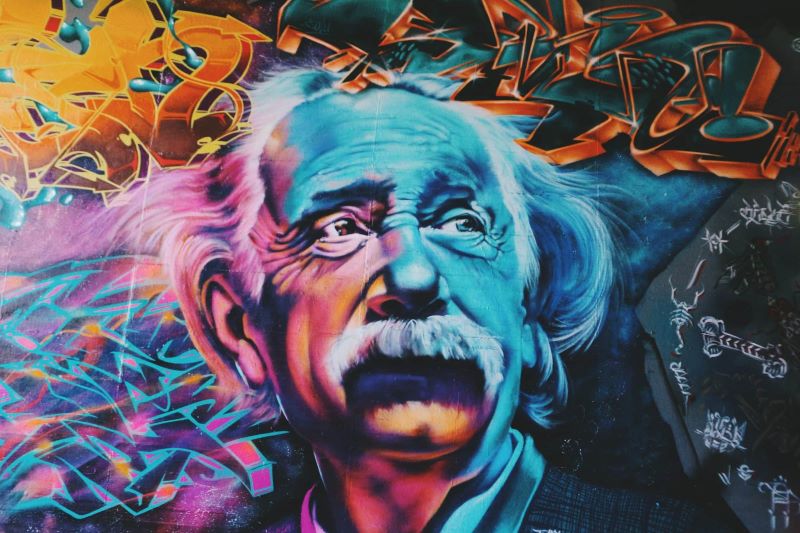How do you write the title of a book in an essay?
A short answer: When you get an assignment, you should carefully read the requirements and understand what citation style you have to use in it. Today, you can Google, “How do you write the title of a book in an essay?” and get links to various helpful manuals that will not only explain titles but also show how to write them properly.
Table of Contents
That’s when you might hit a snag:
Most rules for the main styles — APA, MLA, and Chicago — seem identical at first glance. It’s easy to miss a preposition or punctuation rule, capitalize a wrong word, or forget about italics. The devil is in the details, and the final grade for your paper depends on them.
Why not gather the formatting rules for all the citation styles in one place so that it’s more comfortable to compare them and spot specifics?
We’ve got you covered:
In this article, we share the guidelines for citing book titles in five styles. You’ll see how to write a book title in an essay and how to introduce authors. For the sake of clarity, examples are also here.
What is the title of a book in an essay?
You have several options for formatting a book title in your essay.
First, you can mention it in the essay’s body if you are quoting or paraphrasing information from the book. Also, when compiling a bibliography of the resources you used for research, you’ll need book titles for the reference list.
A book’s title and the details of its author are also essential components. You’ll mention it in the introduction before summarizing a book’s plot, characters, and themes.
How to put book title in essay:
- Use italics
- Don’t underline or use quotation marks, please
- Don’t capitalize minor words like prepositions and conjunctions of three or fewer letters (a, of, to, the, etc.) unless they are the first or last word in a book’s title
How to write a book title and author in an essay?
Details to consider:
- Is it an in-text mention or part of a reference list?
- Are you writing about an entire book or one of its chapters?
- Does the book have one or several authors?
- Does the book have a subtitle?
- Is it an independent publication or a collection of essays, series, or short stories? Are you introducing a poem in your essay?
The answers to these questions will give you a clear understanding of how to write a book title and author in an essay. The formatting rules will depend on the above factors and the citation style you should follow. (We’ve covered the two main styles — APA and MLA — in our essay writing book, available on Amazon.)
There are also some general rules to remember, regardless of the style. Let’s move to them and explore the principles of citing book titles inside and out.
How to Introduce a Book in an Essay: General Rules
Here’s what all the styles agree on in terms of how to introduce a book in an essay:
1 — Italicize the titles of self-contained books. If you mention a novel, a movie, a stand-alone poem, a play, a database, or a website, there’s no need to use quotation marks. For example:
- Harry Potter by J.K. Rowling
- Shakespeare’s Romeo and Juliet
- If by Rudyard Kipling
2 — The titles of parts within a book should go in quotation marks: chapter titles, titles of poems inside a collection, acts or scenes in a play, and so on. For example:
- The Great Gatsby’s “Chapter 5: The Meeting”
- “The Mirror of Erised” from Harry Potter and the Philosopher’s Stone
3 — Capitalize both stand-alone book titles and the parts within a complete work. For example:
- The Dark Tower: The Gunslinger by Stephen King
- “Sometimes They Come Back” from Stephen King’s Night Shift
4 — When the title of a book goes within another title (like in cases with monographs about novels or poems), you should also use italics for independent works and single quotation marks for short stories and parts of books.
For example, this is how to write the title of a journal article containing the book’s title:
- “The Unbearable Weight of Authenticity: Zora Neale Hurston’s Their Eyes Were Watching God and a Theory of Touristic Reading.”
And this is how you’d write a journal article title containing the title of a short story:
- “Individualism in O’Connor’s ‘A Good Man is Hard to Find.'”
When to use a capital letter is the trickiest part of writing book titles in essays. The rules vary between style guides and their editions, which can appear confusing and make it more challenging for students to align with the requirements and ensure consistency.
Below, we’ll explore how to put book title in essay according to five different citation styles: APA, MLA, Chicago, CSE, and AMA.
How to Write the Title of a Book in an Essay: Citation Styles
While most students use APA and MLA citation styles in their academic papers, some institutions also assign alternatives like AMA or CSE. We’ve chosen the five most widespread styles for this guide so that you can have all the rules in one place and see the tiny differences between them for more precise writing.
Here, you’ll find the book title writing guidelines for these styles:
- APA (the American Psychological Association)
- MLA (the Modern Language Association)
- Chicago, aka CMOS (the Chicago Manual of Style)
- CSE (the Council of Science Editors)
- AMA (the American Medical Association)
In addition, you can use AI essay checker to revise your papers and reference lists once your drafts are ready. Whatever style you use to cite sources, this will help ensure that your text doesn’t look AI-gene
APA
APA is the documentation style that the American Psychological Association uses for citing sources. Originated in 1929, this form of writing is standard for social sciences like psychology, communications, sociology, and anthropology. Sometimes, it also relates to engineering, nursing, education, and other corresponding fields.
APA addresses manuscripts for journals and the academic papers students write in college. It’s the most popular and common citation style for the essays your teachers will assign during a course.
The latest version is APA Style’s 7th edition, released in 2020.
When it comes to formatting the title of a book in an essay, APA style’s requirements are easy to remember. Take a look:
| Book titles | Author names |
| Write the title in italicsDo not use quotation marks (unless you’re speaking about the book’s chapter, not the entire piece)Capitalize the first and last words, proper names, and all words of four or more letters (from, among, except, etc.)Capitalize words that appear after punctuation marks (colons, semicolons, em dashes, etc.), even if it’s an article or a short prepositionCapitalize the second part of hyphenated wordsDo not capitalize articles (a, the) or prepositions/conjunctions of three or fewer letters unless they come first or last Examples: A Cuban Memoir of Betrayal and SurvivalQueen Mab; A Philosophical Poem; With NotesJackson’s Track: Memoir of a Dreamtime Place | Start with the last name, followed by the initials and separated with a commaIf a book has several authors, enumerate them alphabetically; use “&” before the last author in the listIf it’s an edited work, use the editor’s last name and initials and add “Ed.” In the case of several editors, enumerate them alphabetically and add “Eds.” after the namesIf the work has both an author and an editor, place the author in the beginning and add the editor’s name in brackets after the book titleIn the case of a corporate author, write the organization’s name in full Examples: Kulish, M.Fitzgerald, F. Scott, Hemingway, E., & Vonnegut K.Black S. How to Live This Life. (White A. & Brown L., Eds.)American Psychological Association |
MLA
MLA is a citation style created by the Modern Language Association and is mainly used in humanities like linguistics, literature, philosophy, and cultural and media studies. It’s the second most used style (after APA), with the most recent manual released in 2021 (the 9th edition).
The manual focuses on the formatting rules for in-text citations, which most users find challenging. It also has expanded guidelines on research papers, grammar mechanics, and inclusive language.
Here’s how to write a book title in an essay, according to MLA:
| Book titles | Author names |
| Write the title in italicsDo not use quotation marks (unless you’re speaking about the book’s chapter, not the entire piece)Capitalize the first and last words, proper names, all significant words, and subordinating conjunctions (although, because, if, unless, etc.)Do not capitalize articles (a, the), prepositions (unless they come first or last), or coordinating conjunctions (so, but, and, for, or, etc.) Examples: The Perks of Being a WallflowerA Good Man Is Hard to FindFuriously Happy: A Funny Book About Horrible Things | Start with the last name, followed by the first name and separated with a commaIf a book has several authors, enumerate them like on the title page: Use the last-first-name system for the first author and then name the others in the usual name-surname order. Place “and” before the last author in the listIf there’s a corporate author, use the organization’s name Examples: Yohansen, MaikKing, Stephen, and Owen KingModern Language Association |
Chicago
The Chicago Manual of Style (CMOS) is more common for published works than college papers. Many see it as the top one for writers, editors, and publishers to follow when formatting content. Unlike APA or MLA, Chicago style provides two methods for documenting sources:
- Author-date, recommended for works in the physical, natural, and social sciences. It requires using parenthetical citations in the text, with a corresponding entry on the reference page.
- Notes-bibliography, recommended for works in humanities and some social sciences. It requires using numbered footnotes in the text, with a corresponding shortened citation at the bottom of the page and a fuller citation on the reference page.
The author-date system is similar to APA style and, thus, more common for college essays. When in-text, you mention the author, the date, and the page number (if applicable) in parentheses after the quotation. Like this:
- Enlightenment thinkers, such as Kant, believed in the “universal, eternal, and … immutable qualities of all of humanity” (Harvey 1990, 12).
Yes, we can. Whenever necessary, ask our academic expert for help with your written assignments. When asking your question, provide detailed requirements, including the citation style you need, so that they know what formatting rules to follow.
Below, let’s explore how to put a book title in an essay in CMOS:
| Book titles | Author names |
| Write the title in italicsDo not use quotation marks (unless you’re speaking about the book’s chapter, not the entire piece)Capitalize the first and last words, proper names, and all significant wordsDo not capitalize articles (a, the), prepositions, or conjunctions (regardless of their length) unless they are the first or the last words of the title or come after a colon Examples: Burke and Hare: The Year of the GhoulsTo Kill a MockingbirdThe Lion, the Witch and the Wardrobe (Chronicles of Narnia, #1) | Start with the last name, followed by the first name and separated with a commaIf a book has several authors, enumerate them like on the title page: Use the last-first-name system for the first author and then name the others in the usual name-surname order. Place “and” before the last author in the listIf there’s a corporate author, use the organization’s name Examples: Bahrianyi, IvanGolding, William, and Harper LeeUniversity of Chicago Press |
CSE
Previously known as CBE (the Council of Biology Editors), this style provided formatting guidelines for the editors of biology journals. Today, we know it as CSE (the Council of Science Editors), and it includes many scientific fields in the life sciences, the physical sciences, and mathematics.
As with CMOS, CSE style recommends two systems for documenting sources:
- Citation-sequence, listing sources on a reference page according to the order of their appearance in the document.
- Name-year, which is similar to the author-date system used in Chicago and APA.
The complete guide is available in Scientific Style and Format: The CSE Manual for Authors, Editors, and Publishers (8th ed.) by the Council of Science Editors. Below, we’ll explore how to write a book title in an essay according to this citation style.
| Book titles | Author names |
| Do not use italics, underlines, or quotation marks for book titlesUse a sentence case; only capitalize the first word in the title, proper names, acronyms, and initials Examples: Plant cell culture: essential methodsThe man who loved childrenThe bridge of San Luis Rey | Start with the last name, followed by the initials and with no commas or periods between themIf a book has several authors, enumerate them like on the title page; use “&” before the last author in the listIf there’s a corporate author, use the organization’s name Examples: Salinger JDMoore A, Tolkien JRR, & Woolf VCouncil of Science Editors |
AMA
AMA stands for the American Medical Association, so it’s a standard citation style in medicine. While it’s less popular than APA or MLA, we’ve decided to include it in this guide anyway, given that medical students might find it helpful.
Is AMA citation the same as APA?
Not quite. While sharing some nuances, the core difference between these two citation styles is that AMA doesn’t use an author-date system in the text. Instead, we use a superscript numbering system here. Like this:
- “Smith² argues that….”
Also, unlike APA, AMA style doesn’t organize the reference list alphabetically, but numerically, based upon the order of the sources’ appearances in the text.
How to write the title of a book in an essay when you use AMA style:
| Book titles | Author names |
| Write book titles in italicsCapitalize all significant words, including two-letter verbs like “be” or “is”For book chapters, only capitalize the first words, proper names, and abbreviations that you’d typically capitalizeDo not use quotation marks Examples: In the Sweat of the ForeheadPublic Health 101: Healthy PeopleAnxious Eaters: Why We Fall For Fad Diets | Start with the last name, followed by the initials and with no commas or periods between themIf a book has several authors, enumerate them like on the title page; use “&” before the last author in the listIf there’s a corporate author, use the organization’s name Examples: Fitzgerald FSBahrianyi I, Khvylovy M, & Pidmohylny VAmerican Medical Association |
How to Format a Book Title in an Essay
Long story short, most citation styles agree on using the same format for book titles in essays: capitalized, italicized, and with no underlining or quotation mark (unless you write about a book’s chapter or a shorter work like an article, an essay, or a poem within a more extensive work).
Speaking of underlined titles:
When googling information on how to write a book title in an essay, you can find questions from people wondering if they need to underline titles in papers. It’s an old-time practice from when essays were written by hand: You can’t italicize when handwriting, so you underline a title to distinguish it.
How to format a book title in an essay in your reference list:
| Formatting: | Example: | |
| APA | Last name, Initials. (Year of Publishing). Book Title. Publisher. | King, S. (2019). The Institute. Scribner. |
| MLA | Last name, First Name. Book Title. Publisher. Year of publication. | King, Stephen. On Writing: A Memoir of the Craft. Scribner. 2000. |
| Chicago | Last name, First Name. Book Title. Publishing place: Publisher. Year of publication. | King, Stephen. The Dark Half. New York City (NY): Viking. 1989. |
| CSE | Last name Initials. Year of publishing. Book title. Edition. Place of publication: publisher. | Schott J. 2002. Leading antenatal classes: a practical guide. 2nd ed. Boston (MA): Books for Midwives. |
| AMA | Last name Initials. Book Title. Publisher; Year of publication. | Gallagher EB. Health in Developing Countries: Sociological Perspectives. Temple University Press; 1993. |
So, How Do You Write the Title of a Book in an Essay?
Now that you’ve read our detailed guide on how to write a book title in an essay, let’s recap:
- Read the guidelines from your teacher before writing: What citation style do you need to follow?
- Check the manual for your assigned style (APA, MLA, or any other) to ensure that you format the book titles and author names correctly.
- Most citation styles (except for CSE) tell you to italicize and capitalize book titles in essays. Nevertheless, proofread carefully to avoid mistakes with the formatting of prepositions, punctuation, and subtitles.
Check EssayShark and its services, once you experience difficulties in writing!
Photo by Thought Catalog from Unsplash








